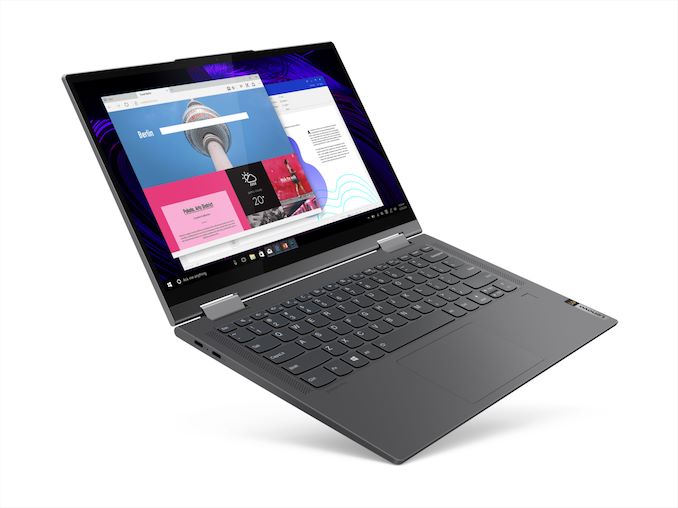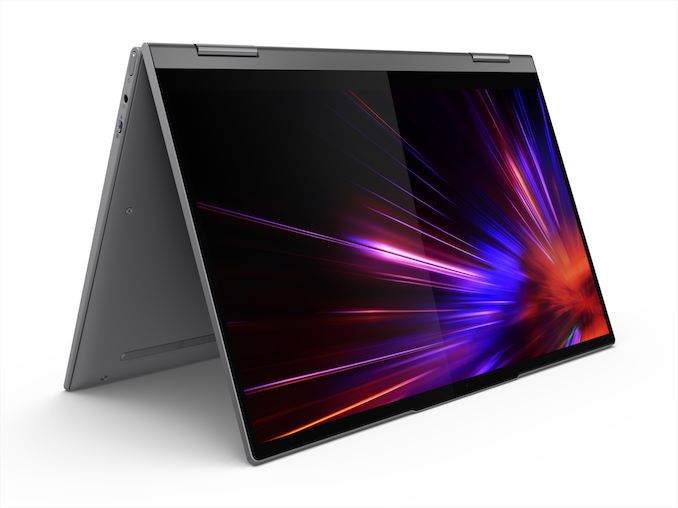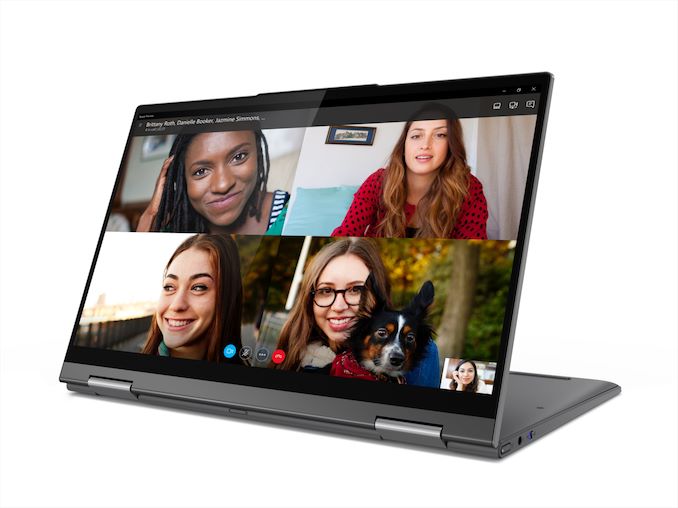CES 2020: The Lenovo Yoga 5G with Qualcomm’s 8cx and Support for mmWave/Sub-6
by Dr. Ian Cutress on January 6, 2020 3:00 PM EST
We’ve been tracking the development of ‘always connected PCs’ since Qualcomm entered the laptop market with promises of enhanced connectivity and all-day battery life. Depending on the market, it’s the latter that resonated most with users: a full 24 hours of real battery is a killer feature. Nonetheless, the desire to enhance the experience with more connectivity options is the primary purpose of this segment, and with the latest 8cx hardware almost ready to go, as one of Qualcomm’s primary partners, Lenovo is almost ready with its newest 5G Yoga device.
So I’ve actually had one of Lenovo’s older Yoga 630 WoS units, equipped with the Snapdragon 855, and the main purpose I use it for is two-fold: as the ultimate backup at events or as the sole device when I’m working and I can’t guarantee a power outlet (say, a 11+ hour flight in economy). The thing it needs is speed, especially as we’re talking about Windows on an Arm-based device. Qualcomm is promising speed with the new 8cx chip, and when paired with a Snapdragon X55 modem, the idea is that for 5G enabled offices and markets, connectivity won’t be an issue.
The new Lenovo Yoga 5G builds on the design of the Yoga 630 WoS, by offering a similar 14-inch 1920x1080 IPS display at 400 nits, a 60 Wh battery, dual USB-C ports, and a fingerprint reader. Aside from the bump from the S855 to the 8cx, the minimum specification also gets a memory/specification lift up to 8 GB of LPDDR4 and 256 GB of UFS 3.0, with a second model offering double the storage.
Inside with the Snapdragon 8cx is the X55 modem, which is stated to have antenna to support both full-band mmWave and Sub 6 GHz networks. Given Lenovo’s business for these devices is likely to be both China and North America, I would assume that this unit should support both (or variants for different markets would be provided). The battery inside, 60 Wh, is almost double the size of the Microsoft Surface that also uses a Qualcomm chip, which would solve the battery life concerns which that device has come under fire for.
The unit comes in an iron-grey color, like the Yoga C630, and also has a Touch Pen accessory available. Lenovo says the unit will start at $1499, which is a premium over the C630. The release date is listed as ‘Spring 2020’.



















8 Comments
View All Comments
Alistair - Monday, January 6, 2020 - link
So it sounds like the old model was too slow even though it was a Snapdragon 855, and the 8CX is basically the same speed. So the new one is more expensive and still slow.domboy - Monday, January 6, 2020 - link
Depends on what you mean by slow, and what you're comparing it to. While I haven't used one of the 855 devices, the 8CX based Surface Pro X doesn't seems slow at all. Unlike the old WoA devices (eg Surface RT) that had eMMC storage, the Pro X has a true SSD and plenty of RAM, and is quite responsive. I expect this new Yoga will perform similarly. No these devices are not gaming laptops, but for most regular uses they should do just fine. And the more of them out there the more likely apps will get compiled and optimized for ARM64.amb9800 - Monday, January 6, 2020 - link
There's a typo in the text -- the Yoga 630 used a Snapdragon 850, which was a modified 845, rather than the 855. 8cx is a good deal faster.manatakahe - Tuesday, February 11, 2020 - link
The C630 is competitive in performance with core-i5 laptops for native apps. You can clearly buy faster machines but they will be heavier and have worse battery life. Modern machines are not all about performance, rather they're a compromise between portability and performance. The right laptop for you comes down to your individual circumstances. I've used a C630 exclusively for over a year and the portability makes it perfect for my needs. I spend most of my time in Firefox, which has native ARM support and I find it plenty fast enough.patel21 - Monday, January 6, 2020 - link
Why would they put such priceyeeeeman - Monday, January 6, 2020 - link
They wanna market it as a premium device but there is no way for them to hide the slowness of emulation.yeeeeman - Monday, January 6, 2020 - link
Stop bothering with this Qualcomm. Arm doesn't seem to improve their cores at the pace you need to reach parity with x86 CPUs and frankly even if they would (say use a apple custom core) they would still lag behind while consuming the same as an Intel cpu (btw arm doesn't get extra perf for free).Santoval - Monday, January 6, 2020 - link
So it *starts* at $1500.. That price is way too steep for 256 GB of storage, 4 GB(?) of RAM and a performance that's only slightly above top-end mobile phone performance - or exactly the same due to the emulation overhead. mmWave 5G will be nearly useless for years as well, due to minimal coverage (in city centers only), while <6GHz "5G" is just souped up LTE. It's 24-hour battery is nice but it is not worth $1500+